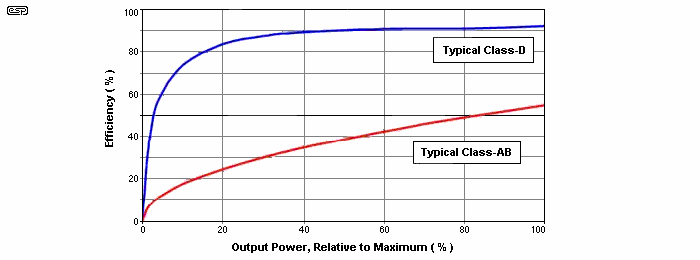class ab vs class d sound quality
Love to find some references. Because of that reasons the class D will have better bass control than the vast majority of class AAB in the market.

Class D Audio Amplifiers What Why And How Analog Devices
Most pro sound amps are now class D.
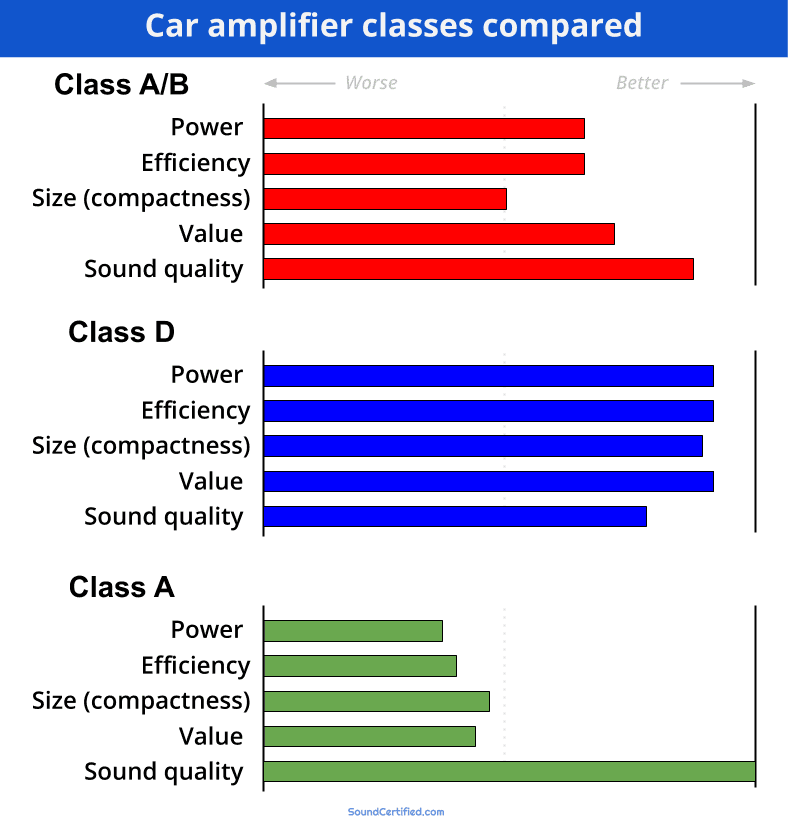
. That to really hear the difference a true Class A amp makes you need an amplifier designed as a Class A amplifier outright something more like the Pass amplifiers. 1 add on bass gain control knob a fancy potentiometer 2 built in variable 24dBoctave steep slope crossover. The savings in efficiency is huge as you dont need as big of a power mains when trying to get 50kw or 100kw of power out to the stage.
This small current is due to the Class A part of the AB which is intended to reduce or eliminate crossover distortion. I use both class D and class AB. 5 variable subsonic filter.
I would have guessed AB at 60 - 65 and D 80 for practical audio amps due to driver circuits and output stage losses but I do not know. I predict that class D will be the predominant class of choice in the future. No way Class D sounds as good as A or AB.
Many amps transition from Class A to AB at some output level. For an installation dedicated purely to sound quality the choice is clear. Also true is that circuit design materials workmanship price point are more important to sound qualityfidelity than Class or circuit topology.
Welcome to Class AB vs. As previously answered correctly by Graham Cox Class A is very inefficient hot with relatively high amounts of harmonic distortion Class D is extremely efficient cool with super-low noise floor. Chat Email or Give Us a Call but Please Excuse our Virginia Accent.
Free Shipping And Store Pickup. There only real advantage is a reduction in switching distortion which would only be audible at very low levels of information. With no signal there is no current flowing in the power section whereas with AB there is always a small current flowing continuously.
Class B design is a little more efficient but full of distortion. All major line array installations have class D amps built in. Up to 17 cash back Class A design is the least efficient but has the highest sound fidelity.
Pioneer SC-57 91 AV Receiver - Secrets of Home Theater and High Fidelity. Class D design has the highest efficiency but isnt quite as. Done properly Class D is an equal to AB or any other class.
It depends greatly on amplifiers used. Rotel RB-1092 Stereo 500 WattsChannel Class D Switching Power Amplifier - Secrets of Home Theater and High Fidelity. Even following available designs class D is very hard to get to the same quality levels as AB.
To me class D sounded smoother and less splashy darker than class AB. Get 0 Financing Options On Top Brands. Class AB design offers power efficiency and good sound.
The Math behind how Amplifiers Make Power. As for AH Gene has benched at least one Pioneer. Ad All Your Music Needs In One Place.
Class G is A at low levels AB at higher and only switches in higher rails as necessary. While a Class AB amplifiers efficiency improves as it approaches maximum output Class D designs maintain a high efficiency rating over the majority of their operating range. It depends on what you want to do.
The quiescent current in AB is higher than in the Class D. Class D amps boast an even higher efficiency level while. I recently borrowed a W-Audio DA-1300 power amp and found its sound quality a little rough compared to home audio amplifiers.
As a result real world efficiency tilts further in their favor. But not by much and youd be hard pressed to notice the difference when class D is done right. Class D has an advantage in energy efficiency.
And this trend will continue. Thus AB amplifiers ensure a higher level of audio fidelity class A trait while staying cooler and more efficient identical to class B. I generally like what Class D does but Im quite liking the Bel Canto amplifiers as they bring the benefits of Class D but sound smoother and easier on the ear than some.
Has class D switching amplifiers come of age enough yet to seriously challenge the superior sound of class AB amplifiers. If you want to build an amp from scratch its much easier to build an AB that sounds good than a class D with similar quality. Whereas class D amplifiers start with an input signal and then output signal looks like larger and shorter pulses.
Midrange was better but lower midrange was leaner had to change speaker cables. But if you have class AAB amp with huge amount of current reserve and using good amount of negative feedback their bass control to your speaker is the same. 2 and 5 are particularly important esp with THOS.
My first thought is that a class D would have less audible harmonics. Class AB makes the input signal and output signal identical and every step of the way. Otherwise which is going to sound better depends on the design of this specific amp not which class it is.
Ad Since 1974 Weve Been Helping Customers Choose Use and Enjoy Audio Video and More. Shop QSC Recording Gear Today. Sunfire amps use Class D to control the rails of a Class AB output stage.
IIRC efficiency for push-pull class A is 50 and class B 80 max theoretical. Little signal in big signal out. I am not sure what class of amplification the W-Audio is its 2x420w 8Ω 2x 650w 4Ω 1300w mono bridged 8Ω.
2021-05-23 1136 pm. In Class AB you have actual audio coming through the entire amp where in D its converted to a PWM signal at some point. There are several reasons for this.
For an installation where power delivery is limited or massive amounts of power are required the choice is clear there as well. However with all things being equal in the expertise and intentions of highest possible sound quality yes a class A or AB can generally be a little better than class D. Some class D amps blow any AB amp out of the water.
Similar to class A these amps let the current smoothly flow through output transistors but the level of electricity in this case is significantly lower in the idle mode. Curious tnx - Don. Some have been designed with manual switching to choose mode.
3 built in parametric eq. The W-Audio is 200 the Behringer EP4000 is 300. Lows were tighter while highs initially sounded less extended but they just sound different - cymbals are less splashy.
Oh no you didnt. Were Here to Help. Music is rendered with awesome realism amazing finesse precision and ultra low noise.
In short it is making a larger identical signal. Class BAB is therefore a pretty good compromise. Ad Hypex Class D amplifiers compete with high end products for a fraction of the price.
The EP4000 is class H. Heres one set of measurements for an older Rotel. 4 time correction phase correction circuitry.
And some for a Pioneer. In the middle it depends on your application and budget. They both sound good when done well.
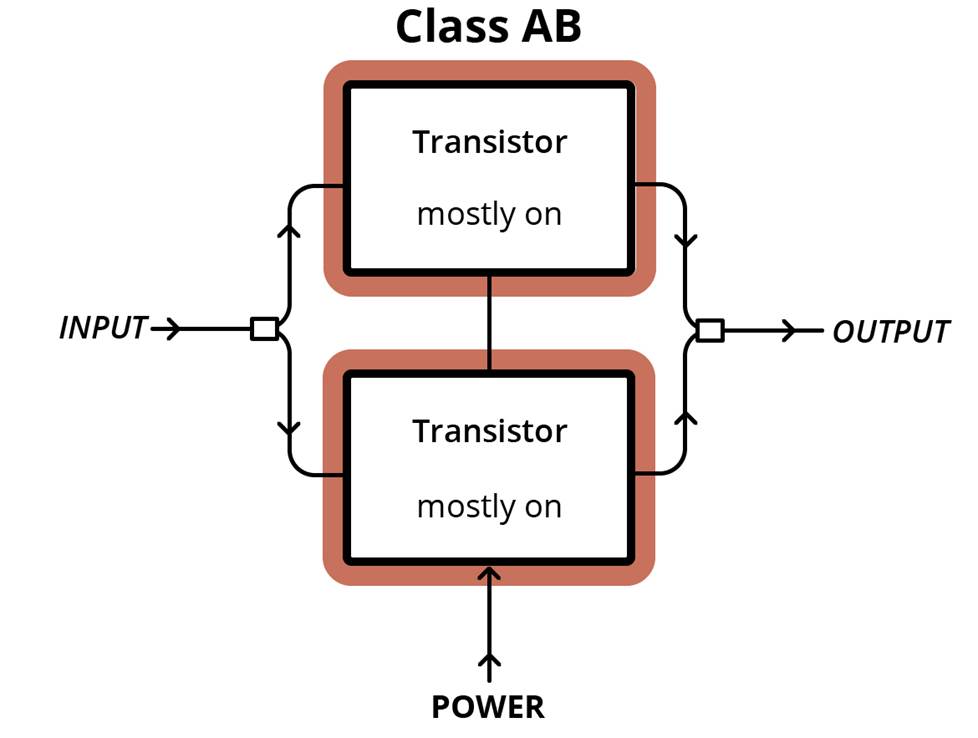
Which Amplifier Class Is The Best How Class D Amplifier Technology Differs From Class A And Ab
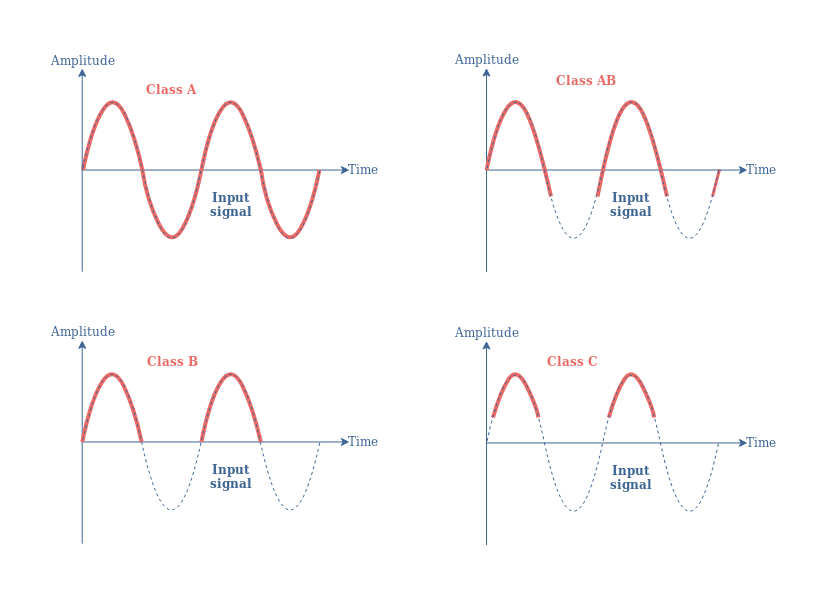
Amplifier Classes Electronics Lab Com

Which Amplifier Class Is The Best How Class D Amplifier Technology Differs From Class A And Ab

What Are The Different Types Of Audio Amplifier Classes Audioholics

Amplifier Classes And The Classification Of Amplifiers

What Are The Different Types Of Audio Amplifier Classes Audioholics

What Is A Class D Car Amplifier How They Work And More

Amplifier Classes From A To H Circuit Cellar
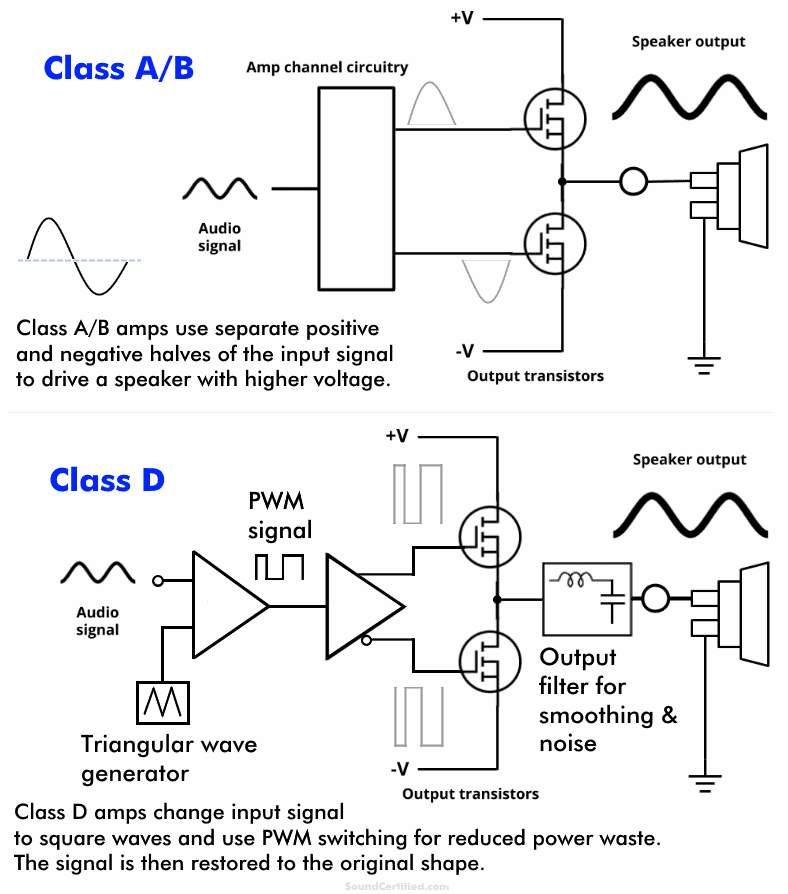
What Is A Class D Car Amplifier How They Work And More

Classes Of Power Amplifiers Class A B Ab C D Amplifiers Explained
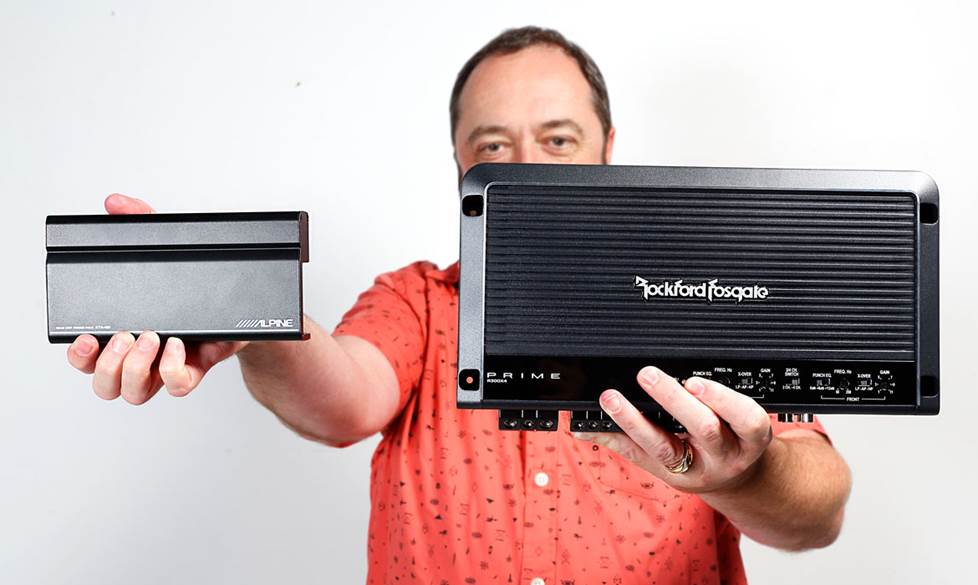
Which Amplifier Class Is The Best How Class D Amplifier Technology Differs From Class A And Ab

Amplifier Classes And The Classification Of Amplifiers

The Class D Amplifier Is The Star Of Acoustic Vehicle Alerting Systems St Suggests News
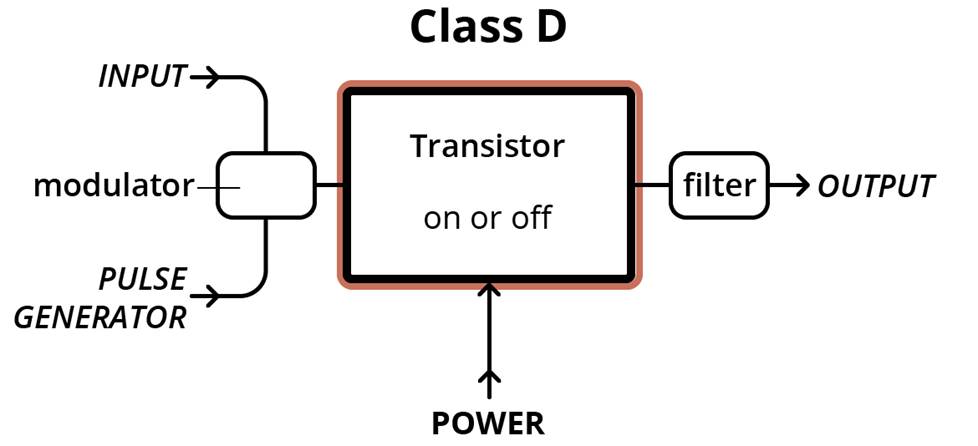
Which Amplifier Class Is The Best How Class D Amplifier Technology Differs From Class A And Ab

The Class D Amplifier Is The Star Of Acoustic Vehicle Alerting Systems St Suggests News
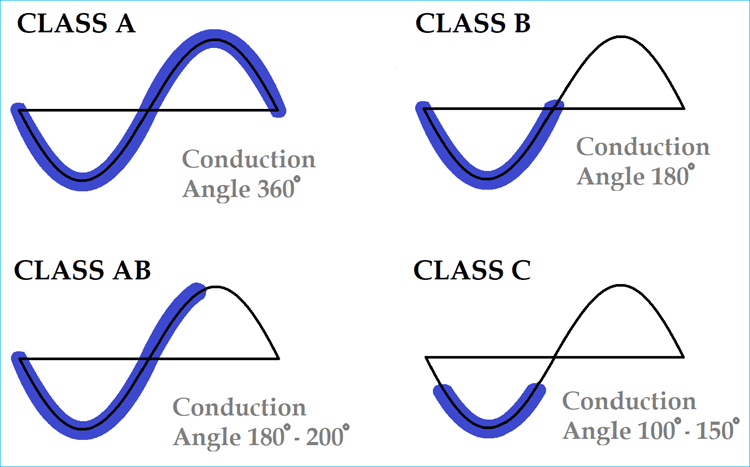
Classes Of Power Amplifiers Class A B Ab C D Amplifiers Explained
